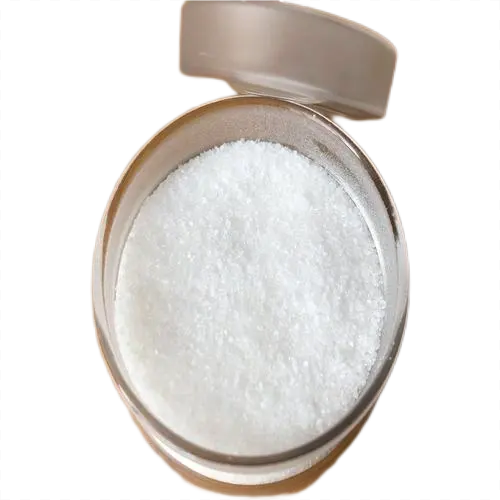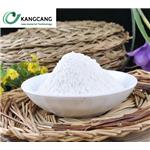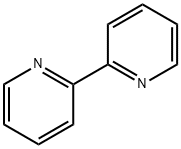Antimicrobial, cytotoxic, and antioxidant activities and physicochemical characteristics of chromium(III) complexes with
The physicochemical properties of several chromium(III) complexes with ligands, such as picolinate, dipicolinate, oxalate, 2,2′-bipyridine, and 4,4′-dimethoxy-2,2′-bipyridine were investigated. First, the stability and formation constants of the synthesised chromium(III) complexes in aqueous solutions were evaluated with potentiometric titrations. In addition, the stoichiometry of each chromium(III) complex in water was analysed with conductometric titrations. Next, the potential antioxidant properties of chromium(III) compounds were determined by evaluating the ability of the synthesised complexes to reduce nitro blue tetrazolium salt. We also investigated the antimicrobial properties of the solutions of these compounds against Bacillus subtilis, Escherichia coli, Enterococcus faecalis, Pseudomonas aeruginosa, Staphylococcus aureus, and Staphylococcus epidermidis. The cytotoxic properties of chromium(III) complexes were tested using a human keratinocyte cell line (HaCaT).

Studies have evaluated the physicochemical and biological properties of chromium(III) complexes, given their popularity among chemists, biomedics, and scientists dealing with the plastic industry. Chromium(III) complexes containing picolinate (pic) and dipicolinate (dipic) anions as ligands are of particular interest and very popular. As a nutritional supplement, chromium(III) tris(picolinate) is essential for lipid and carbohydrate metabolism. These complexes were non-toxic to a human breast adenocarcinoma cell line (MCF-7). Furthermore, studies evaluating the anti-hyperglycaemic activity of Cr(R-pic)3 complexes showed that the administration of complexes neither caused any change in the physical activity of mice nor killed the test mice.
However, no therapeutic effects were observed in terms of blood glucose, triglyceride, total cholesterol, high-density lipoprotein, low-density lipoprotein, and serum insulin levels. In addition to the therapeutic effects mentioned above, chromium(III) complexes with oxalate ligands are known to exhibit biological properties. As recently reported, the compound 1,5-naphthyridine trans-diaquadioxalatochromate(III) dehydrate exhibited antimicrobial properties against gram-positive and gram-negative species of bacteria, including Enterococcus faecalis, Staphylococcus aureus, Listeria innocua, Shigella flexneri, Escherichia coli, Salmonella enterica, and Pseudomonas aeruginosa.
The studies on chromium(III) complexes were performed using both chemical and biological methods. PT and CT analyses allowed for the examination of properties of the complexes [Cr(dipic)2]Hdmbipy∙2.5H2O, [Cr(2-pic)2(H2O)2]NO3, [Cr(dipic)2][Cr(bipy)(dipic)H2O]∙2H2O, cis-K [Cr(C2O4)2(H2O)2], and trans-K[Cr(C2O4)2(H2O)2]·3H2O. The reactivity of the tested complexes toward a superoxide anion radical was investigated using the NBT test. EA values reveal the highest antioxidant activity for [Cr(dipic)2][Cr(bipy)(dipic)H2O]∙2H2O, which is a stronger antioxidant than the known antioxidant L-ascorbic acid. Biological study results show that the complexes 1 and 3 exert bacteriostatic activities against some of the bacterial species (B. subtilis and E. coli). The analysis of the results of the potential cytotoxicity of these agents reveal that the complexes 2–5 show no cytotoxic activities against human keratinocytes at concentrations up to 200–500 μM in 24 h. The exception is compound 1 that shows maximum cytotoxicity and strongly affects cell viability in a time and dose-dependent manner.
The results presented in this report may be useful for further studies evaluating the effects of the tested chromium(III) complexes on human body as antioxidants or dietary supplements substituting Cr(pic)3.
References:
[1] JOANNA DRZEŻDŻON . Antimicrobial, cytotoxic, and antioxidant activities and physicochemical characteristics of chromium(III) complexes with picolinate, dipicolinate, oxalate, 2,2′-bipyridine, and 4,4′-dimethoxy-2,2′-bipyridine as ligands in aqueous solutions[J]. Journal of Molecular Liquids, 2019, 282: Pages 441-447. DOI:10.1016/j.molliq.2019.03.049.
);You may like
Lastest Price from 2,2'-Bipyridine manufacturers

US $20.00/KG2024-04-30
- CAS:
- 366-18-7
- Min. Order:
- 1KG
- Purity:
- 99%
- Supply Ability:
- 200 tons/ year

US $9.00-70.00/g2024-04-30
- CAS:
- 366-18-7
- Min. Order:
- 10g
- Purity:
- 99%
- Supply Ability:
- 10 tons


